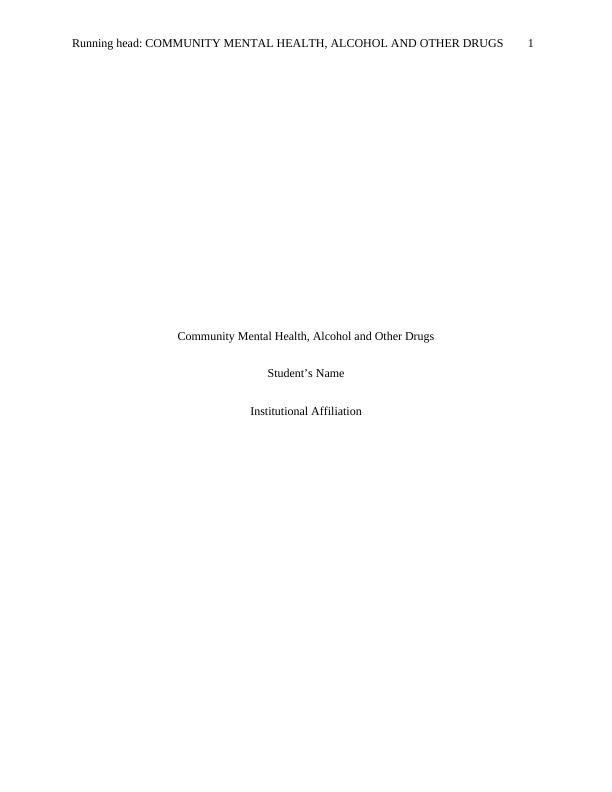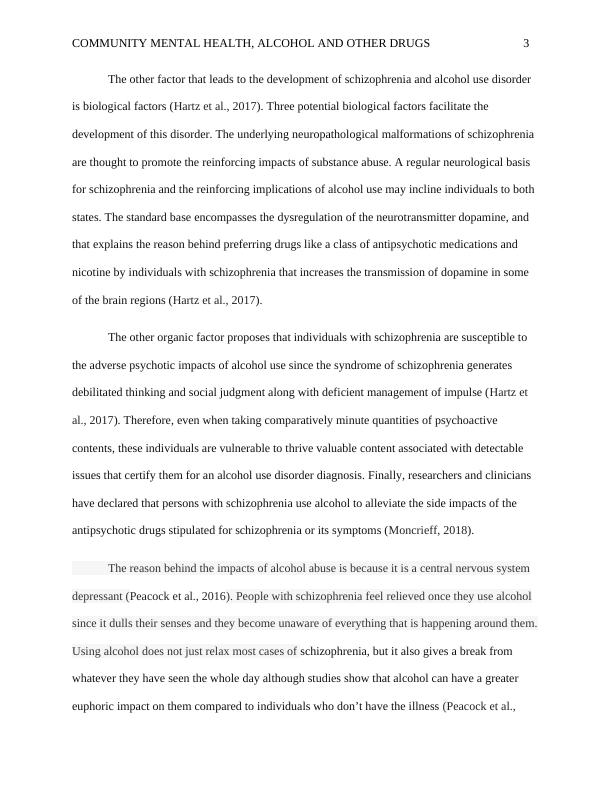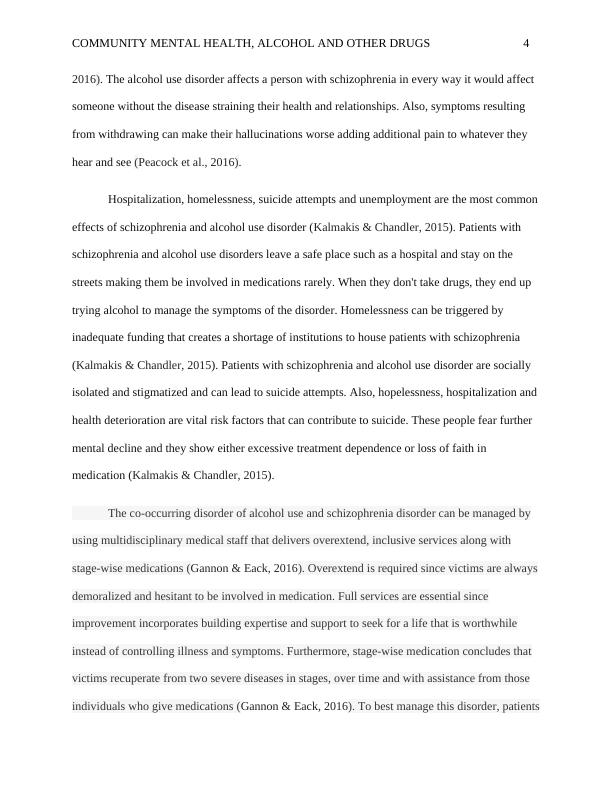Community Mental Health, Alcohol and Other Drugs
11 Pages3243 Words363 Views
Added on 2023-06-06
About This Document
This essay discusses the co-occurring disorders of alcoholism and schizophrenia, and heroin addiction and depression. It explores the development, impact, and management of these disorders through treatments, counseling, and peer support. The essay also highlights the effects of these disorders on individuals, including hospitalization, homelessness, suicide attempts, job loss, legal troubles, financial problems, and relationship conflicts.
Community Mental Health, Alcohol and Other Drugs
Added on 2023-06-06
ShareRelated Documents
End of preview
Want to access all the pages? Upload your documents or become a member.
Dual Diagnosis Co-Morbidity and Society Article 2022
|17
|4399
|11
Psychology of Addiction
|8
|1702
|35
Mental Health and Schizophrenia in Criminal Justice
|7
|1490
|358
Deconstruction Essay on Aboriginal People and Alcohol/Substance Abuse
|8
|2162
|289
Cannabis Abuse Among Adolescents and Young Adults in Australia
|7
|1673
|216
Mental Health and Substance Disorders in the New Zealand Justice System
|12
|4461
|46




